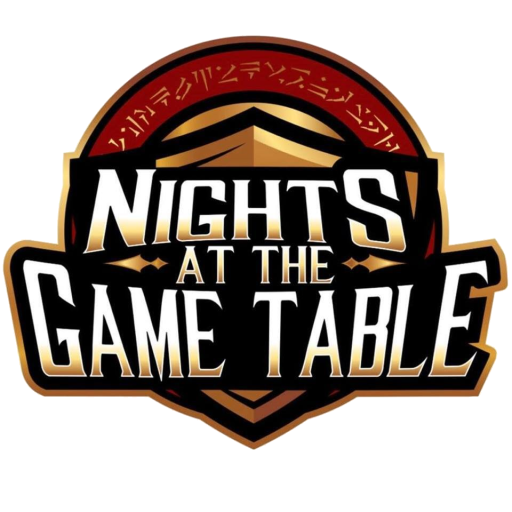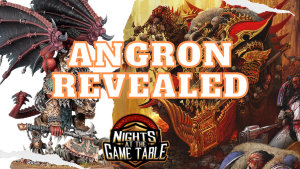For those of you who don’t live under a rock I’m sure you’re well aware that the ATC is this coming weekend. Over 70 teams composed of 5 players each are making the arduous voyage to Chatanooga Tenessee to compete in the 2nd largest team tournament in America. If you’re interested in any of the lists from this years ATC, they’ve all been made public here. ATC’s format is much like ETC’s format, except with 5 players instead of 8. The teams of 5 face off in 5 1v1 matches and the team’s result for the round is calculated based on how each player individually does. This format may seem simple enough, but there is actually a well of strategic depth which is often glossed over in this format: the pairings process.
I have been a member of Team America for ETC for 6 years, and this will be my 4th year attending ATC. This makes me uniquely experienced in the pairings process, compared to most people who seldom play formats which require this procedure. That said, I assure you this process is integral to your success at these events, and understanding it intimately is a huge boon.

The easiest way I can describe the pairings process is through demonstration. Take 2 teams: Team Fluffy Bunnies and Team Scrubs. Fluffy Bunnies has armies A, B, C, D, E and Scrubs has armies 1, 2, 3, 4, 5. The teams are set to play on row 27. Row 27 has 5 tables of varying degrees and types of terrain. Some tables have tons of line of sight blocking terrain, while some are lucky to have some shrubbery, and the remainder falls some in between. This non-uniformity of terrain is by design. To start the round Team Fluffy Bunnies wins a roll off, which means they get to choose the table first. Let’s put a pin in that for now, and I will come back to why that’s relevant soon.
Both Teams select a player in private to be the “first defender”. They then reveal their selections simultaneously. Fluffy Bunnies selects player A and Scrubs selects player 4. That means these players will be determining in the first two matches. *Note they are not playing each other* The two teams then choose two of their remaining four armies to attack the defender. Team Fluffy bunnies chooses C and E to attack Scrub 4. Whilst, the Scrubs choose players 1 and 2 to attack player A from Fluffy Bunnies. These selections are also made secretly and independently.

Let’s take a sec to look at where we are in the process.
Fluffy Bunnies defended with player A and was attacked by players 1 and 2
Scrubs defended with player 4 and was attacked by players C and E.
The teams then select which attacker the defenders want to play. Again, secretly and simultaneously. Player A select player 1, and player 4 selects player C. Since Fluffy Bunnies won the roll off they get to choose the table. Player A selects a table with tons of LoS blocking, and then player 4 selects a very neutral board.
Now we are down to 3 players left on each team. Fluffy Bunny has players B, D, and E While Scrubs has players 2, 3, and 5.
They repeat the process again, and Fluffy Bunnies defends with player D, while Scrubs defends with player 5. By default, the remaining players have to attack the defenders because that’s all that remains. Each player selects someone who they wish to play, and the refused attackers play as the 5th match.
So to finish it out, player D choose attacker 3. And player 5 chooses player B. That leaves player 2 vs player E as the last match.
In summation here are the matches:
| Fluffy Bunnies | Scrubs |
| A | 1 |
| C | 4 |
| D | 3 |
| B | 5 |
| E | 2 |
- Now, I know you guys came here for a lesson in pairings and not an algebra lesson, so I’ll start speaking 40k, instead of math.
- There are many different thoughts about how to pair, and they mostly stem through team composition. Some teams try to bring 5 all comers lists, and just try to rely on good play with good armies to win the day. Other teams will try to polarize their composition to leverage the pairings process as much as possible.
- Here’s example of the latter.
- Team Jerk Faces:
- -Astra Militarum with 3 Shadowswords
- – Imperial Knights with 4 Knights
- – Renegade Knights with 4 Knights
- – Necrons with 3 Tesseract Vaults
- – Chaos with Magnus and Morty
- This team is just trying to leverage big monsters and tanks. Theoretically this works, because even if the other team has one hard counter to big stuff in the form of their own shadowsword list or something, and then another army like Eldar, who can likely just play through it, the other 3 armies they bring will just be overrun.
- Other teams try this same tactic but instead of leveraging big monsters as their gimmick, they leverage another gimmick such as horde armies, or fliers.
- Historically this composition hasn’t won, but it’s not without merit.

- Personally, I believe the correct composition is a mixture of all comers and 2-3 skewed lists which try to leverage the ability to choose matches.
- That said, there are other factors to a team style tournament which affect the power level of armies greatly. For example, Tau are a strong army, and often times what holds them back in singles play is line of sight blocking terrain. Your team may think that it can comfortably handle Tau because all of the players on your team have beaten Tau in various tournaments you’ve attended. That said, is your team prepared a Tau Defender that chooses planet bowling ball with literally 0 terrain? Conversely, are you prepared for 100 Gene Stealers defending on a table that has a line of sight blocking ruin every 4 inches? These are some of the hidden things you need to consider when composing your own teams for these tournaments.
- Other things to consider are what people will commonly defend with. Defenders by virtue are there to be put forward and then attacked. Armies that are hard to kill or just very strong generally make for good defenders due to their ability to play nearly anything decently. A very popular defender style list is 100+ Plaguebearers, so your team composition may want to take that into account and put in some anti-plaguebearer tech such has Death Hex or Null Zone. That way if the other team goes “first defender Plaguebearers.” You can respond by attacking with your Null Zone Guard army and your Thousand Sons Death Hex list. Conversely, if you can find a good defender to use that isn’t main stream you’re likely to get more mileage out of it.

- There’s a bit more to it than that though. A team is composed of 5 players, and unless there’s a large skill disparity between the teams matched together, then very seldom does a team walk away with 5 wins. Teams that do try to get all 5 of their players into optimal pairings often fail and end up taking 3-4 small losses, because they were making sacrifices to try to help out the guy that didn’t have anywhere good to go. Sometimes the right move is to sacrifice players to open up options in pairings later. This is especially hard in practice since you’re often sentencing one of your friends to tabling, but remember it is a means to an end. Think of the pairings process like a chess match, where every move needs to be deliberate and calculated to ensure victory. No ones wins chess by trying to lose pieces.
- There are tons and tons of other strategies and theories revolved around the pairings process, and I am of firm belief that no one has truly mastered the process yet. These are just some considerations I keep in mind when pairing my own personal team. Good luck to everyone going this weekend and say hi to me and my team- Beast Coast, sponsored by Nights at the Game Table!




